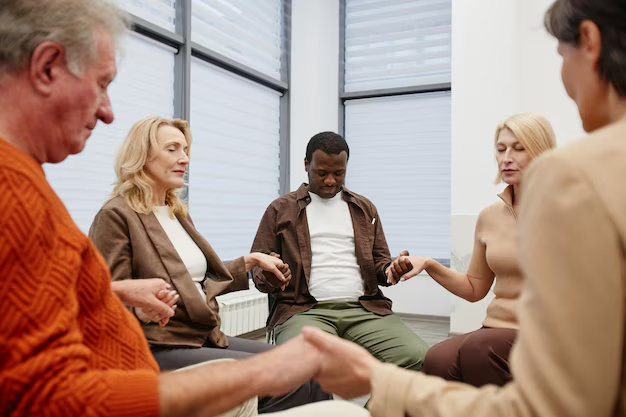Discover Local Senior Advocacy Groups: A Must-Read Guide for Seniors and Caregivers
As our population ages, the significance of local senior advocacy groups has never been more critical. These groups offer invaluable support, providing resources and connections that seniors might otherwise struggle to access. Whether you or a loved one is navigating the complexities of aging, these local groups offer a lifeline, advocating for seniors' physical, emotional, and financial well-being.
Why Local Senior Advocacy Groups Matter
Local advocacy groups are champions for seniors, focusing on policy change, community support, and direct services that address the diverse needs of older adults. They serve as an important conduit between seniors and their families and the resources available to them. These groups not only fight for senior rights but also provide targeted programs tailored to enhance life quality.
Types of Services Offered
- Advocacy and Community Outreach: Help with understanding senior rights, representation in policy discussions, and community education programs.
- Health and Wellness Support: Resources for affordable healthcare, wellness programs, and mental health services.
- Financial Consultation: Assistance with budgeting, accessing pensions, and managing retirement accounts.
- Social Activities and Peer Support: Programs to combat loneliness and encourage active involvement in the community.
Joining these groups gives seniors a voice and platform, helping them gain confidence in managing their life transitions.
Tapping into Government Aid Programs
For many seniors, financial strain heightens as retirement income often falls short. Here’s where government aid programs come in. These programs, often advocated by local groups, can provide essential support in the forms of food benefits, medical aid, and housing assistance.
Key Programs to Consider
- Supplemental Security Income (SSI): Provides financial aid to those with limited income.
- Medicare and Medicaid: Offers critical health coverage; advocacy groups can help with navigating enrollment options.
- Low-Income Home Energy Assistance Program (LIHEAP): Assists with utility bills, reducing household costs during extreme weather conditions.
Understanding these resources and how to apply for them can be complex, but local senior advocacy groups offer guidance and help facilitate access.
Financial Assistance and Debt Relief Options
Navigating financial stability is crucial for seniors, especially when debt looms large. Debt relief options can offer practical solutions, and local advocacy groups often have partnerships with financial advisors who can provide free or low-cost advice to seniors.
- Credit Counseling Services: Partnering with trusted organizations to offer classes about managing credit and avoiding scams.
- Reverse Mortgages: As a way to use home equity as financial support.
- Debt Management Plans: Tailoring payment plans to reduce interest rates and eliminate debts progressively.
Working with local groups can simplify the decision-making process, providing confidence in these financial steps.
Expanding Horizons with Educational Grants
Education is not only for the young. Many seniors pursue learning opportunities as a means of keeping active and engaged. Local advocacy groups can connect seniors with educational grants and programs designed specifically for older adults. Whether it’s a course on modern technology or creative writing, these opportunities empower seniors to continue learning and growing.
Inspiring Next Steps
Local senior advocacy groups provide the backbone of support, guidance, and resilient community spirit that seniors need. Engaging with these groups can significantly enhance life quality, offering targeted solutions where they’re most needed. As you explore these paths, remember that knowledge and networking are your greatest tools.
Here is a list of helpful programs and resources for financial stability and continued education:
- 💰 Social Security Benefits: Ensure you receive all eligible benefits.
- 🏡 Reverse Mortgage Programs: Tap into home equity for financial relief.
- 📖 Senior Educational Grants: Scholarships and courses for lifelong learning.
- 🔄 Debt Management Services: Get expert advice on managing and reducing debts.
- 🏥 Medicare Assistance Programs: Access comprehensive health care support tailored to seniors.
- 📞 Local Counseling Services: Direct access to experts for various senior-related issues.
These options offer paths toward financial independence and personal fulfillment, underscoring the essential role of senior advocacy groups in today’s society.

- Dental Care Services
- Understanding Prescription Drug Coverage For Seniors
- Navigating Health Insurance Plans Tailored For Seniors
- Understanding The Role Of Primary Care Physicians Specializing In Geriatrics
- Comprehensive Guide To Maintenance Services For Seniors: From Lawn Care To Home Repair
- Navigating The World Of Housekeeping Services For Seniors
- An Expansive Guide To Home Modification Services For Seniors: Starting With Grab Bars And Beyond
- Understanding Respite Care Facilities For Seniors
- Navigating Assisted Living Facilities: A Comprehensive Guide For Seniors
- Your Ultimate Guide To Retirement Communities For Seniors